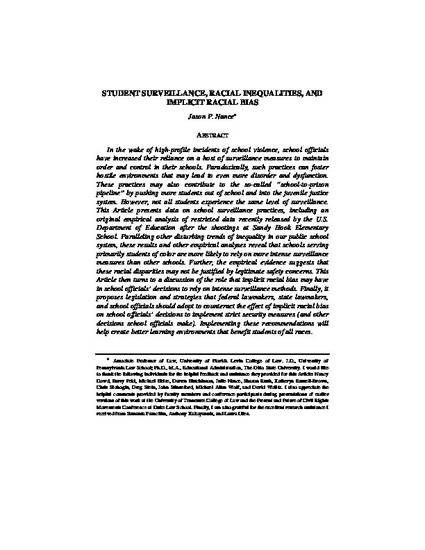
In the wake of high-profile incidents of school violence, school officials have increased their reliance on a host of surveillance measures to maintain order and control in their schools. Paradoxically, such practices can foster hostile environments that may lead to even more disorder and dysfunction. These practices may also contribute to the so-called “school-to-prison pipeline” by pushing more students out of school and into the juvenile justice system. However, not all students experience the same level of surveillance. This Article presents data on school surveillance practices, including an original empirical analysis of restricted data recently released by the U.S. Department of Education after the shootings at Sandy Hook Elementary School. Paralleling other disturbing trends of inequality in our public school system, these results and other empirical analyses reveal that schools serving primarily students of color are more likely to rely on more intense surveillance measures than other schools. Further, the empirical evidence suggests that these racial disparities may not be justified by legitimate safety concerns. This Article then turns to a discussion of the role that implicit racial bias may have in school officials’ decisions to rely on intense surveillance methods. Finally, it proposes legislation and strategies that federal lawmakers, state lawmakers, and school officials should adopt to counteract the effect of implicit racial bias on school officials’ decisions to implement strict security measures (and other decisions school officials make). Implementing these recommendations will help create better learning environments that benefit students of all races.
